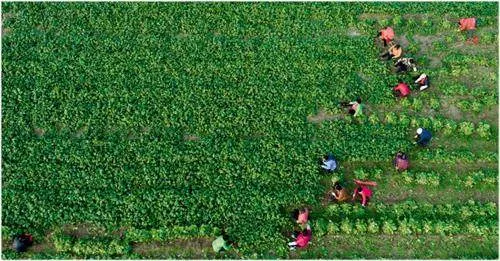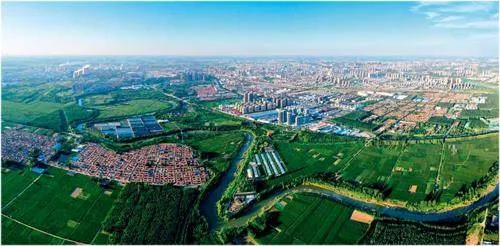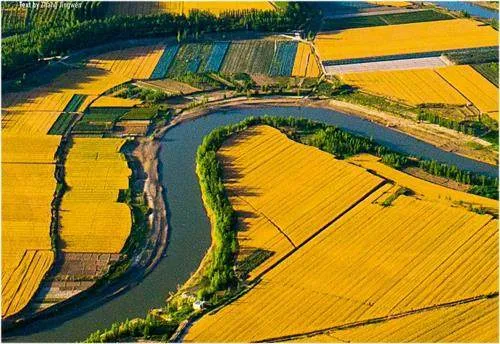Riverside City Dezhou






In the city of Dezhou,Shandong Province, theYellow River and other riversrun from east to west, whilethe Grand Canal runs north-south.Throughout history, the rivers havenourished the land, people, customs,and culture of Dezhou whilefloating the city into the future.
Dezhou was so named due to theYellow River. After Qin Shi Huang(259-210 B.C.), the first emperorof the Qin Dynasty (221-206 B.C.),unified China, he renamed theancient Yellow River “De Shui.”During the Sui Dynasty (581-618),Emperor Wen named the placeDezhou, which means “a peacefuland harmonious prefecture.” Sincethen, this name has been used andcontinued to this day.
Due to its location as a militarystronghold, Dezhou had long been aplace of strategic importance in thepast. The completion of the GrandCanal made Dezhou’s positionon China’s ancient north-southtransportation route increasinglyimportant. During the reign ofEmperor Qianlong (1736-1796)of the Qing Dynasty (1644-1911),commerce flourished in Dezhou,with more than 200 handicraftworkshops and more than 400businesses producing many famousproducts that were sold across thecountry. At the same time, culturesfrom northern and southern Chinaconverged in Dezhou throughthe canal, making the city a placeblending the styles of people fromacross the country.
A fondness for learningand respect for teachers andeducation are fine traditions ofDezhou people. Dong Zhongshu(179–104 B.C.), a renownedscholar in the Western HanDynasty (202 B.C.-8 A.D.), oncetaught in Dezhou. During the Ming(1368-1644) and Qing dynasties,academies, private schools and otherteaching institutions flourished inDezhou, and famous writers andscholars from all over the countrygathered there frequently.
Traces of the Grand Canal canbe found in many parts of Dezhou.For example, in addition to the fourgates in the east, west, south, andnorth that most ancient Chinesecities had, Dezhou also has a smallcity gate just north of the west gate.It was built to let people fetch waterfrom the canal outside the city wall,so it was called the Water Gate.
The canal also helped Dezhoushine in the exchange betweenChina and other countries. Asan important hub on the Beijing-Hangzhou Grand Canal, Dezhouwitnessed a continuous stream ofdiplomatic envoys from variouscountries passing through in ancienttimes. The most famous of themwas a ruler of Sulu, an ancientkingdom in the southwest of thePhilippines. In 1417, a king of Sululed a delegation of more than 340members across the ocean to Beijingto pay tribute to the Ming Dynastyemperor. They were received withhigh honors. But on the way back,the Sulu king died of illness and wasburied in Dezhou. His descendantshave lived in Dezhou ever since.They naturalized as Chinese withsurnames Wen and An in the QingDynasty. Today, these two clanshave reached the 22nd generation,and they still reside in the areasaround the king’s tomb afterforming a village named Beiyingthere.
Among the cities along theGrand Canal, Dezhou still preservesthe most original section of thewaterway, which still undertakesimportant functions such as flooddischarge, drainage, and watertransportation. Today, the canalis still driving Dezhou’s urbandevelopment, but in new ways.Dezhou prohibited commercialdevelopment on 667 hectares ofland on both sides of the GrandCanal and invested more than3 billion yuan (about US$425million) for ecological restorationalong the waterway. Moreover,the city is vigorously promotingcultural protection, inheritance, andutilization of the Dezhou sectionof the Grand Canal, relying onthe historical heritage, intangiblecultural heritage, and industrial sitesof the Grand Canal to empowerthe high-quality development oftourism through integrating it withculture.
Ecological restoration in Dezhouhas already achieved early results,with some rare bird species takingup residence along the banks ofthe canal. When visiting Dezhou,tourists often enjoy boat rides to appreciate the scenery blendingcityscapes and water views. Theystroll down streets and alleys tosavor renowned Dezhou braisedchicken and tofu. They also visit theLiangzi Black Pottery Museum toexperience the charm of intangiblecultural heritage. The banks ofthe canal are also favorite venuesof leisure and entertainment forlocals. It is common for families andfriends to gather along the canal toenjoy an outdoor barbecue party.
With protection work on theDezhou section of the Grand Canalprogressing smoothly, Dezhou hasbegun to implement a Yellow Riverand Grand Canal national culturalpark connection project. At the endof 2023, a 130-kilometer sightseeingcorridor connecting the YellowRiver and the Grand Canal wascompleted. The corridor, which isstill being extended, adds a northsouthtourist avenue to Dezhou andprovides a venue for sport eventssuch as cycling and marathons.
Today, projects such asenvironmental restoration ofrivers and lakes and ecologicalprotection and restoration ofthe lower reaches of the YellowRiver in Dezhou are proceedingat full speed. In the future,Dezhou will focus on connectingfive trunk streams, 1,500tributaries and 20 reservoirs toform a water system, and usingit to connect the Yellow Riverwith the Grand Canal. By then,every waterway will provide aninexhaustible source of vitalityfor the development of the watereconomy, ecology, and culture inDezhou.

